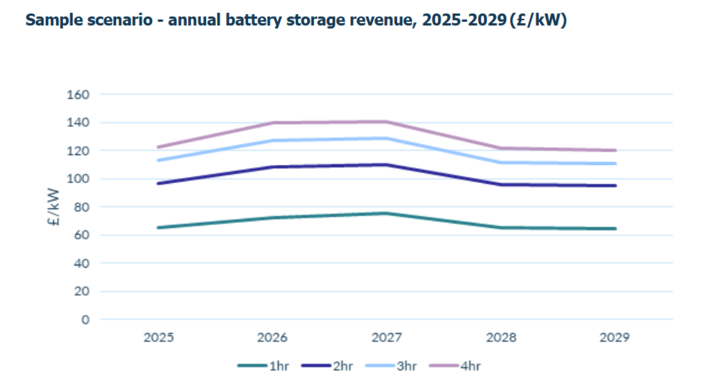DNV GL today released its third annual Battery Performance Scorecard, an independent ranking and evaluation of different types of commercial Li-ion batteries, based on testing performed in DNV GL’s battery performance and safety test laboratories. This year’s Scorecard is the largest to date and includes named manufacturers. The Scorecard also provides insights into the evolution of the energy storage market, and this year found a shift in preferred battery chemistries, as well as an influx of new system designs that will improve safety.
More data transparency about battery safety and performance
“Battery investors, EPCs, and developers need confidence that their battery choice is right for their application, the warranties are sound, performance is predictable, and systems are safe. A robust and independent testing program is foundational to the future of the industry. The Battery Performance Scorecard builds confidence and helps to accelerate the market, making data about battery safety and performance more transparent and easier to verify with independent reviews,” said Richard S. Barnes, region president North America at DNV GL - Energy.
Read more: Residential battery storage with double-digit growth in 2021
The industry is changing: Despite the impact of COVID-19, the energy storage market is growing and transforming, which demands increased investment assurance.
Shift towards lithium iron phosphate chemistry
While lithium nickel manganese cobalt oxide (NMC) and lithium nickel cobalt aluminum oxide (NCA) chemistries remain a signature of the stationary energy storage sector, the industry is seeing a shift toward the lithium iron phosphate chemistry.
In addition to cell level changes, Scorecard authors also noted the following industry shifts which may impact cell original equipment manufacturers (OEMs) in the future:
Rather than requiring human entry, energy storage systems (ESS) have moved to compartmentalized modular units that can be accessed and maintained from the outside.
Need for greater asset assurance
The practice of the engineering, procurement, and construction (EPC) offering a full wrap (a back-to-back alignment of their warranties and guarantees with other suppliers in the project) may be changing as well, as EPC contractors transfer risk to insurance. While insurance company Munich Re recently announced products to back energy storage warranties, this change also highlights the need in the industry for greater asset assurance, which independent testing provides.
Growing emphasis on fire safety
Continued and growing emphasis on fire safety: The 2020 Battery Performance Scorecard notes that the industry is focusing on fire safety—and more specifically, combustion of flammable off-gases, which are generated during thermal runaway—in the post-2019 energy storage system design era.
Did you miss that? Rapid rise in battery innovation plays key role in clean energy transitions
While newer system designs can prevent the cascading of thermal runaway from unit to unit, ignition of flammable off-gas has emerged as the prime failure mode to avoid or safely manage in light of the lessons learned from the 2019 APS McMicken event and others since.
Several issues exist with the release of the 2020 NFPA 855 safety standard and the reliance on UL9540A testing—inconsistencies in test report formats and definitions, as well as a broad definition of what constitutes an energy storage “unit.” These standards will evolve with future industry input.
About the Battery Performance Scorecard
Now with 22 participants, the Scorecard dataset is approaching a size large enough to create approximations of losses as a function of cycles or throughput, similar to how conventional power plants can assess fixed operational costs per megawatt hour. The Scorecard datasets populate DNV GL’s Battery XT product suite, which computes lifetime and replacement schedules and can be used to estimate O&M costs.
The Scorecard provides crucial support for investor decision-making in an industry experiencing remarkable growth. DNV GL’s 2020 Energy Transition Outlook forecasts that energy storage systems in North America will arbitrage more than 40TWh of energy production in 2050. The Scorecard characterizes the abuse factors necessary to model and assess battery degradation, predict lifetime, verify the warranty, and to determine whether the system is fit for service in its intended application.
BEST Test and Commercialization Center
DNV GL tests a range of batteries and provides the industry with reliable, rigorous, and consistent data to determine what constitutes high battery performance. DNV GL’s BEST Test and Commercialization Center in Rochester, New York, has logged more than 5 million channel hours per year since its opening in 2014. (hcn)







